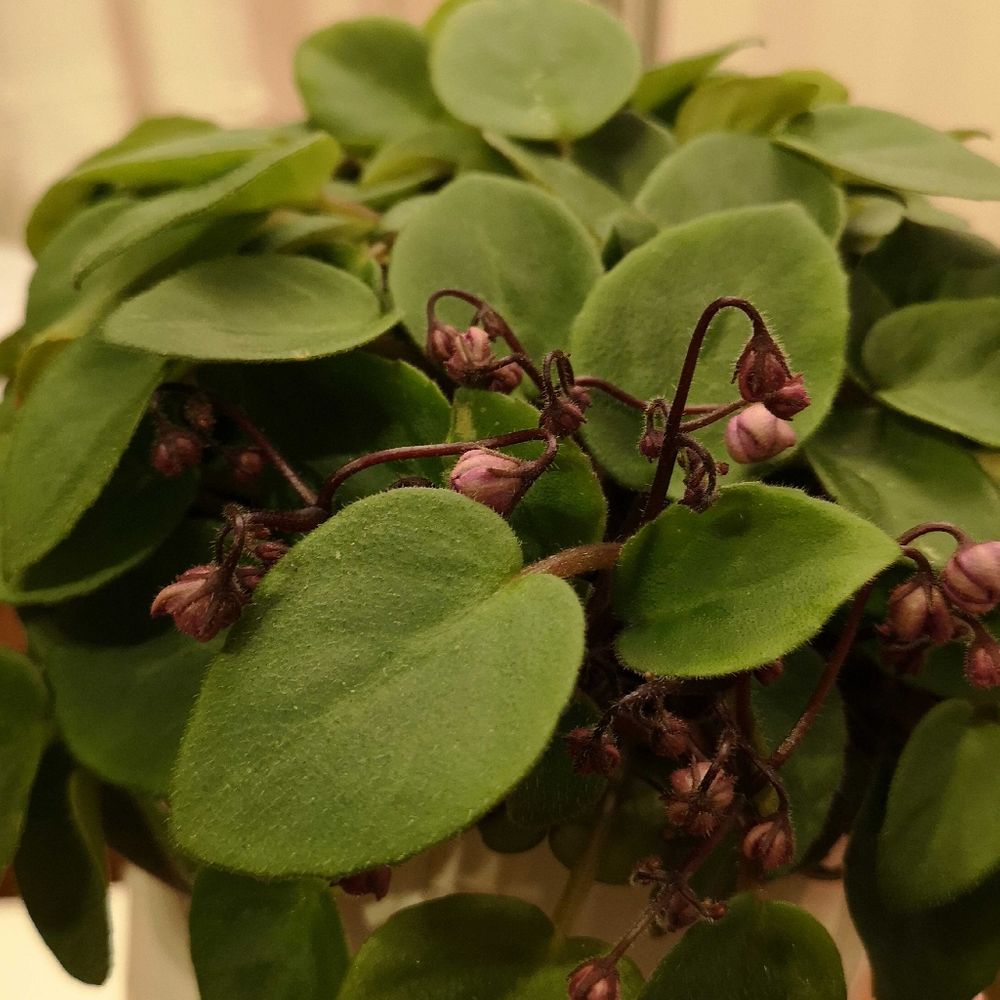African violets
(Saintpaulia ionantha ionantha)

Description
Saintpaulia ionantha ionantha, commonly known as the African violet, is a popular houseplant and a member of the Gesneriaceae family. This plant is native to the tropical regions of eastern Africa, including Tanzania, Kenya, and Uganda. It is a small, compact, and delicate plant with a cluster of brightly colored flowers that bloom all year round, making it an attractive addition to any home or office. Taxonomy and Nomenclature The African violet was first discovered in Tanzania in 1892 by Baron Walter von Saint Paul-Illaire, a German colonial officer. It was named after him, and the plant's scientific name, Saintpaulia ionantha, was coined by the botanist Hermann Wendland in 1893. The plant's genus name, Saintpaulia, is derived from Baron von Saint Paul-Illaire's name, while the species name, ionantha, comes from the Greek words "ion" meaning "violet" and "anthos" meaning "flower." There are six recognized subspecies of Saintpaulia ionantha, with the most commonly cultivated variety being Saintpaulia ionantha ionantha. This subspecies is characterized by its rounded, glossy, dark green leaves that grow in a rosette pattern and its clusters of flowers that come in various shades of purple, blue, pink, and white. Description and Growth Habits The African violet is a small, herbaceous perennial plant that typically grows to a height of 6-8 inches (15-20 cm) and has a spread of 6-12 inches (15-30 cm). It has a rosette growth habit, with leaves that grow directly from the stem and form a circular pattern. The leaves are ovate to heart-shaped, with a glossy, dark green surface and a fuzzy underside. The leaf margins may be serrated or smooth. The African violet is a shade-loving plant that prefers bright but indirect light. It thrives in temperatures between 60-80°F (16-27°C) and high humidity levels. This plant is typically grown in pots or containers and requires well-draining soil with a slightly acidic pH. It is sensitive to overwatering and should be watered only when the top inch of soil feels dry to the touch. The African violet is a relatively slow-growing plant that can be propagated through leaf cuttings or offsets. The plant may also produce small plantlets or "pups" that can be separated and transplanted to grow into new plants. With proper care and maintenance, the African violet can live for several years and continue to produce vibrant blooms. Uses and Benefits The African violet is primarily grown as an ornamental houseplant and is widely cultivated for its attractive foliage and colorful flowers. It is a popular choice for indoor gardening enthusiasts and is often used as a decorative accent in homes and offices. The plant's small size and ease of care make it a great choice for beginner gardeners or those with limited space. In addition to its aesthetic appeal, the African violet has also been studied for its potential health benefits. The plant is believed to have antibacterial and anti-inflammatory properties and has been used in traditional medicine to treat a variety of ailments. Some research suggests that the plant may have antioxidant properties and could potentially be used in the development of new pharmaceuticals. Cultivation and Care Continuing on from the previous section, here are some additional tips for the cultivation and care of Saintpaulia ionantha ionantha: Watering: African violets should be watered when the top inch of soil feels dry to the touch. Avoid getting water on the leaves, as this can cause spotting or rot. Water the plant from the bottom by placing the pot in a saucer of water and allowing the soil to soak up the moisture. Drain any excess water after 30 minutes. Humidity: African violets prefer high humidity levels, so it's important to keep the plant in a humid environment. You can increase humidity levels by placing a tray of water near the plant or by using a humidifier. Fertilizer: African violets should be fertilized every 4-6 weeks during the growing season (spring and summer). Use a fertilizer specifically formulated for African violets, and follow the package instructions carefully. Pruning: African violets benefit from regular pruning to encourage bushier growth and to remove dead or damaged leaves. Use clean, sharp scissors to trim the leaves or stems, and avoid cutting too close to the base of the plant. Pests and diseases: African violets are generally resistant to pests and diseases, but they may occasionally be affected by spider mites, mealybugs, or fungal infections. Inspect the plant regularly for signs of infestation or disease, and treat promptly with an appropriate pesticide or fungicide. Repotting: African violets should be repotted every 6-12 months to refresh the soil and promote healthy growth. Choose a pot that is slightly larger than the current one, and use a well-draining soil mix specifically formulated for African violets. By following these tips, you can successfully cultivate and care for Saintpaulia ionantha ionantha, and enjoy its beautiful flowers and foliage for many years to come.
Taxonomic tree:







